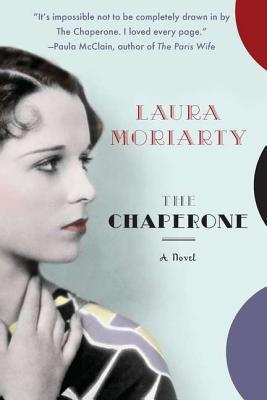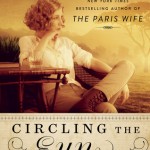 The Chaperone is not quite a story about Louise Brooks, although she’s the device that makes the whole thing possible. So what is it?
The Chaperone is not quite a story about Louise Brooks, although she’s the device that makes the whole thing possible. So what is it?
It’s a fictionalized account of something that might have been, a journey that the now-legendary 1920s film actress might have taken to New York to audition for the famous Denishawn modern dance company in 1922. Brooks did join Denishawn that year. She was 15.
But young girls from Cherryvale, Kansas (transplanted to Wichita for the purpose of the story) did not spend summers in New York City on their own in 1922, no matter how mature and precocious they might be. And no matter how neglectful their fathers were and how determined their mothers might be to leave them to raise themselves. Sending Louise off alone just wouldn’t have been done.
Enter the fictional character of Cora Carlisle. A married woman willing to spend a summer in New York at the Brooks’ expense, chaperoning the Brooks’ incredibly willful daughter, all for the excuse to explore her own hidden past.
The title of the story is The Chaperone because it is Cora’s journey that we follow, not Louise’s. And what a journey it is.
 When we first meet Cora, she seems like a staid, middle-class matron. A woman who has settled in to her boring and predictable little life, and who fears the modernity embodied by Louise (picture at right from Wikimedia Commons), who symbolized with her bobbed hair and very relaxed morals the flapper and the Jazz Age.
When we first meet Cora, she seems like a staid, middle-class matron. A woman who has settled in to her boring and predictable little life, and who fears the modernity embodied by Louise (picture at right from Wikimedia Commons), who symbolized with her bobbed hair and very relaxed morals the flapper and the Jazz Age.
But Cora goes to New York to confront her past. She was one of the forced by lucky participants in a great social experiment of an earlier generation; Cora was one of the orphans who was sent West on the Orphan Trains. She intends to go to the orphanage that she came from, and search for her own records. She wants to know her roots. Her adoptive parents were good to her, but they are long dead. The past can’t touch them. But it might help her.
The future is what she finds. Louise may be taking dancing lessons, but it’s what she teaches Cora that matters. She opens up the world of the big city, and a window into the way that the world will be. As Louise’s chaperone, she goes to shows that she wouldn’t have seen, places she wouldn’t have visited. The world is bigger than Wichita. And what happens in New York, can stay in New York.
But Cora has a secret back home, too. Her marriage is not what it appears to be. Just as Louise’s privileged childhood is not what it appears to be. But living with Louise has taught Cora that if you maintain the appearance of things, what happens behind closed doors can be very different from the world sees.
Cora can have her private happiness if she is willing to reach outside of her moral corset and grab for it with both hands. Louise was never that lucky.
Escape Rating A-: Louise Brooks’ history is known, but Cora Carlisle’s fictional existence is woven so seamlessly into her biography that I had to check it again to make sure that she didn’t exist. The meld of fact and fiction was almost picture perfect.
At the beginning of the story, there’s a big dose of “why are we here?” going on in the reader’s head. Or at least this reader. Louise is not a sympathetic character. She is self-centered and self-absorbed to the point where it’s no wonder her mother wants to send her off with someone else for the summer. And Cora is, to use a word suited to the time, a prig. The hook was getting into Cora’s head about why she wants to go on this trip.
But there’s also a little mystery. Cora doesn’t ask her husband’s permission to go to New York; she tells him she’s going. That just wasn’t done in 1922. Either she’s very liberated, and her other interactions don’t bear that out, or there’s something unusual in her marriage, which turns out to be the case.
The 20s were a fascinating time, and Cora managed to be in the right place at the right time to see a lot of things that foreshadowed later historic events. She grows up a LOT during that summer, much more than Louise, which is what makes the story. Louise should be the one growing up, but Louise is already much older than she should be. Unfortunately so. Cora is the one who “gets a life” that summer.
Louise is the tragic figure. She’s already fallen, she just doesn’t know it yet. Cora, the older woman, is the larva who will break out of her cocoon and become a butterfly.
 ***Disclaimer: I was compensated for this BlogHer Book Club review but all opinions expressed are my own.
***Disclaimer: I was compensated for this BlogHer Book Club review but all opinions expressed are my own.
If you want to join this month’s discussion of The Chaperone on the BlogHer Book Club, you can join the discussion by following this link to the Book Club.









Your summary kind of reminds me of Miss Pettigrew Lives for a Day. I am looking forward to reading this book. 🙂
Pauline Baird Jones recently posted..googlecd20eb13f78687f0